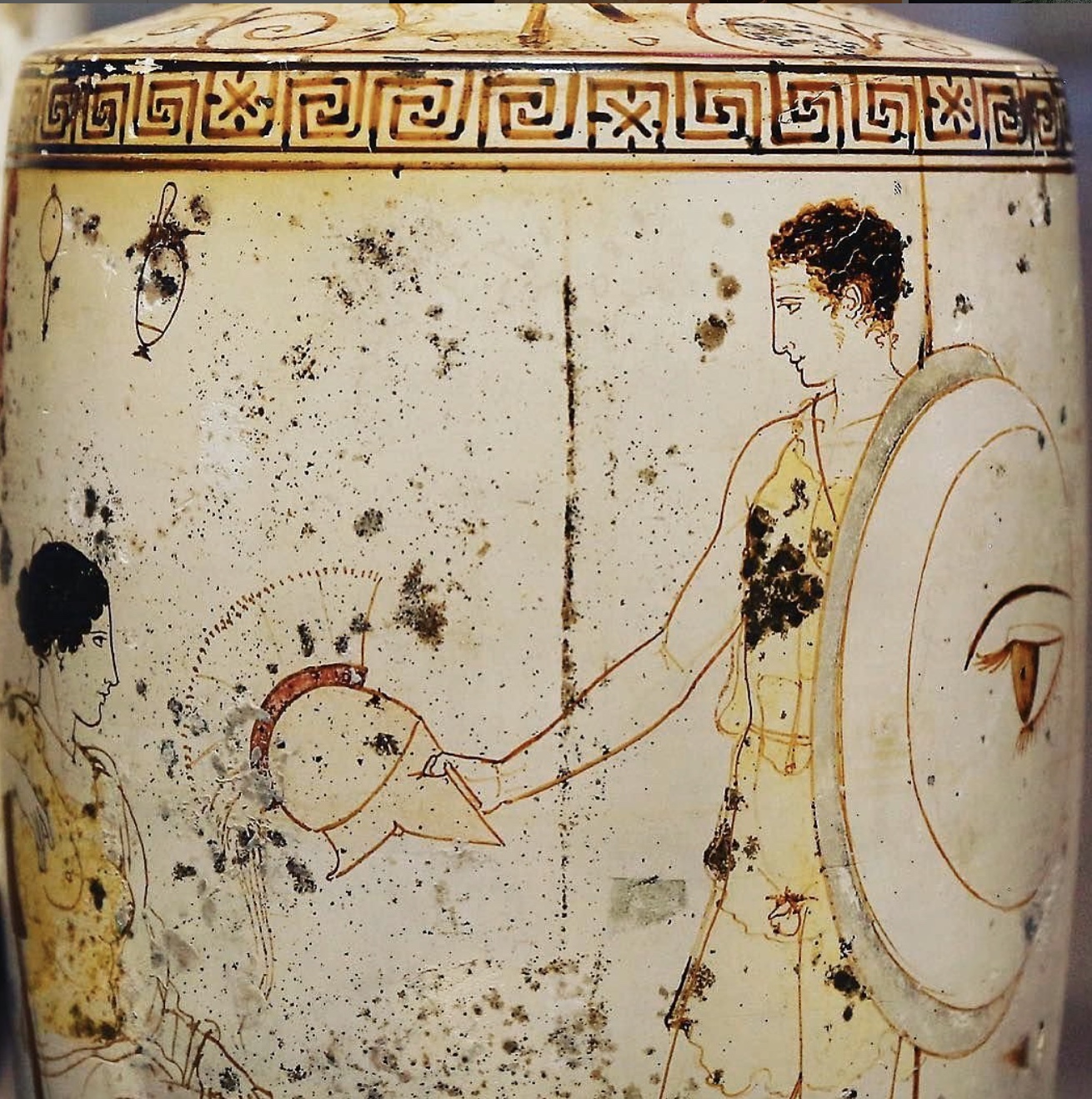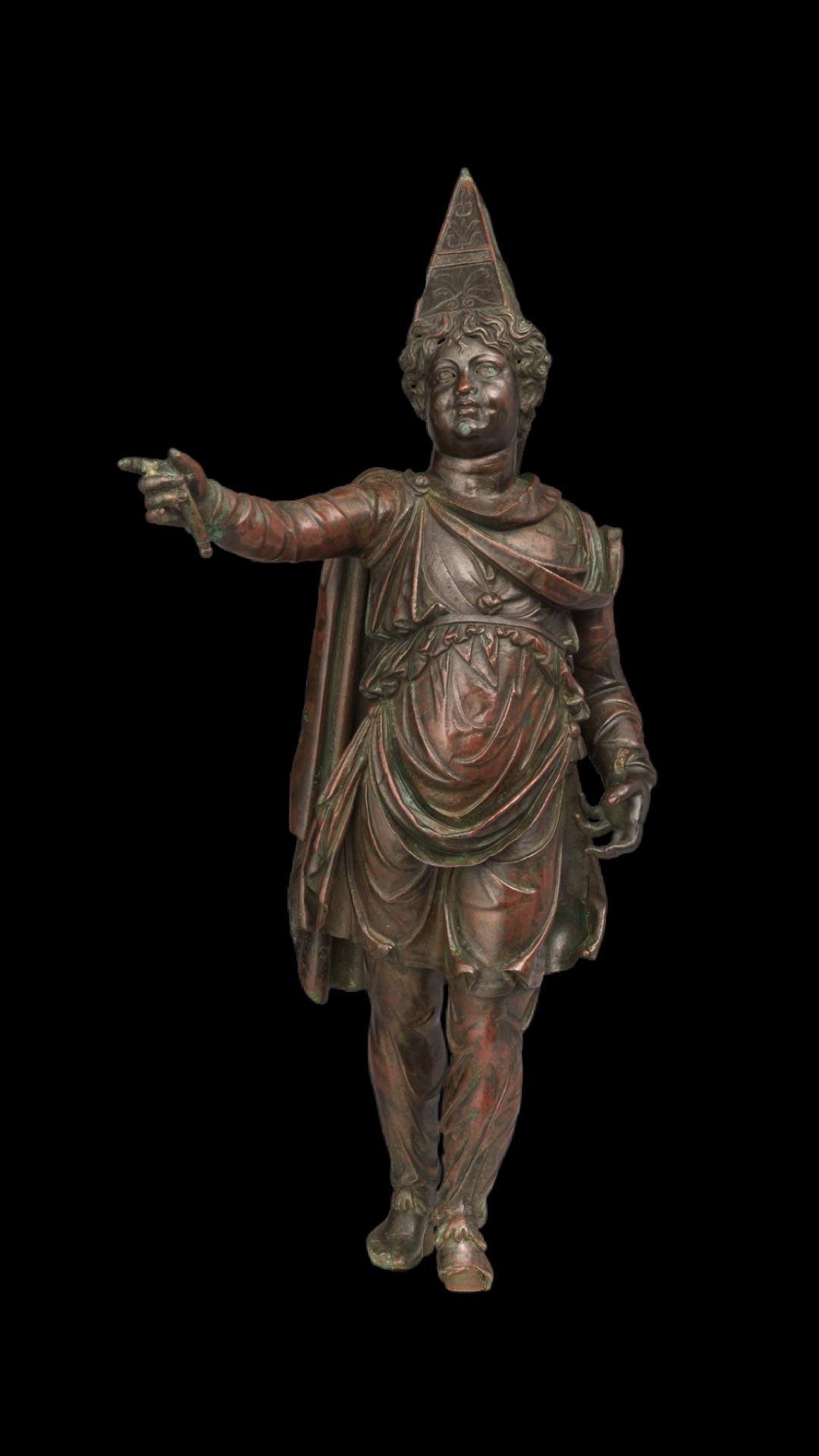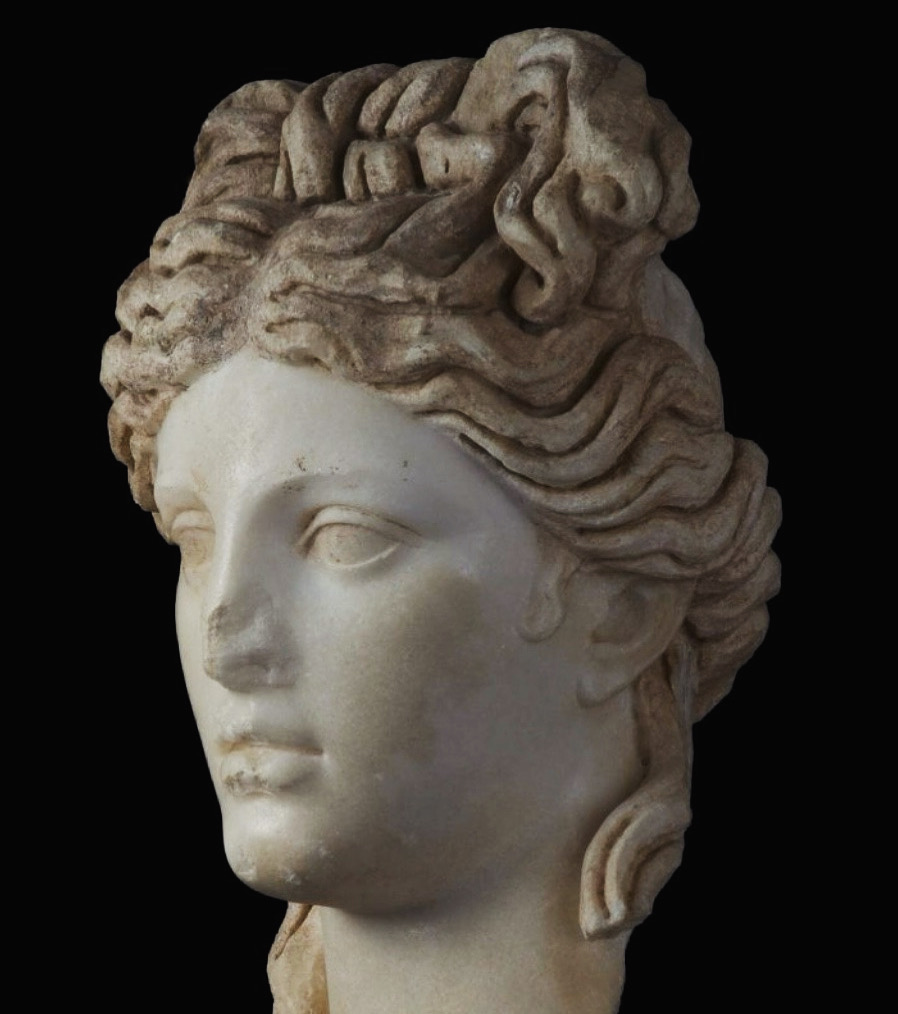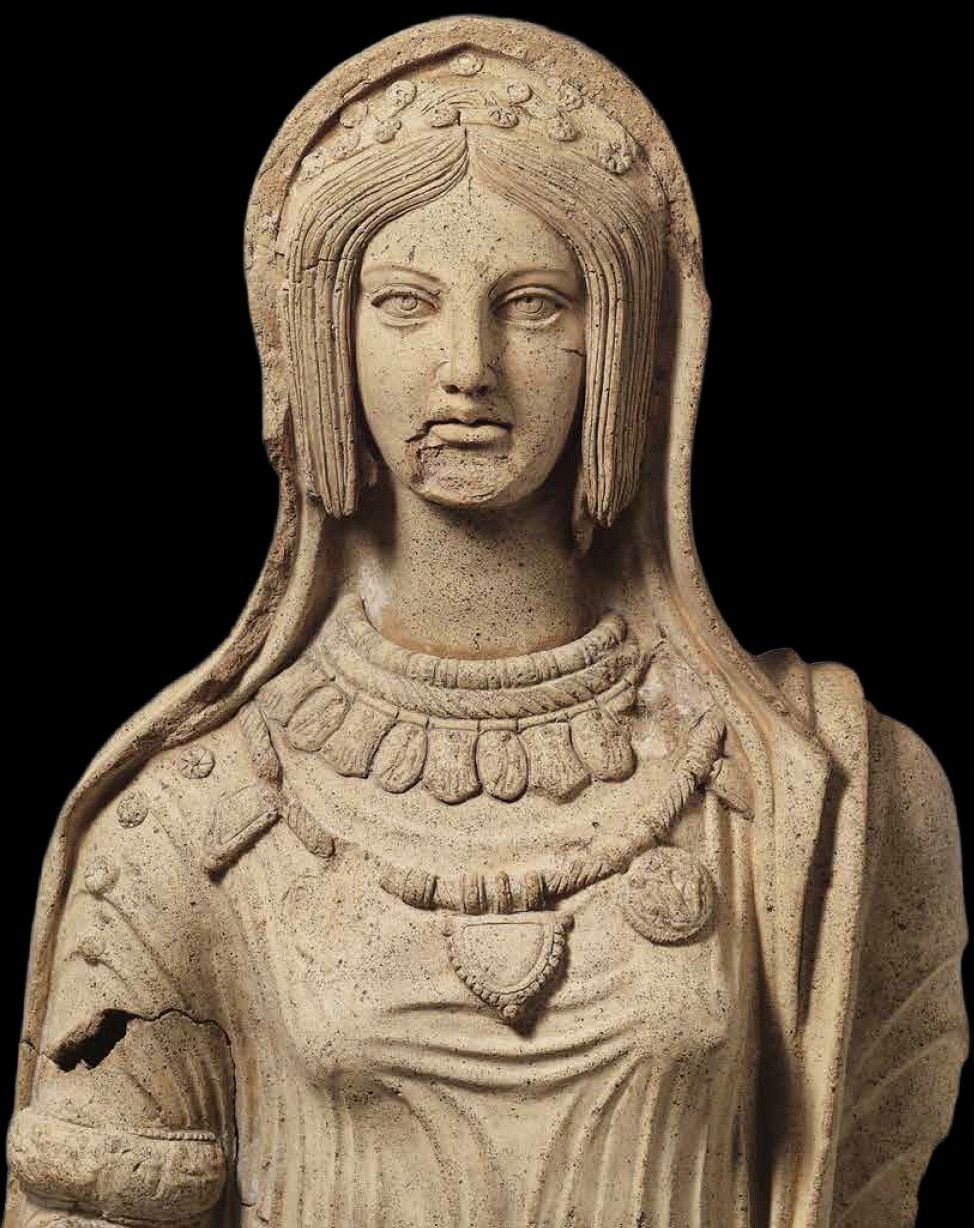The lekythos in Classical Athens was a most unusual vase shape, and this white-ground example is really quite special.
Unlike so many other vase types, lekythoi were wholly unrelated to the symposium and wine-consuming, and instead were made specially with a carinated inner lip for precision-pouring during libations. Their cylindrical bodies and near vertical walls lent themselves supremely well to scenes with standing figures, and towards the mid-fifth century B.C., painting upon a white ground was used predominantly (if not quite exclusively) for them, giving tantalizing hints of what contemporary wall and panel painting (nearly all lost) might have looked like.
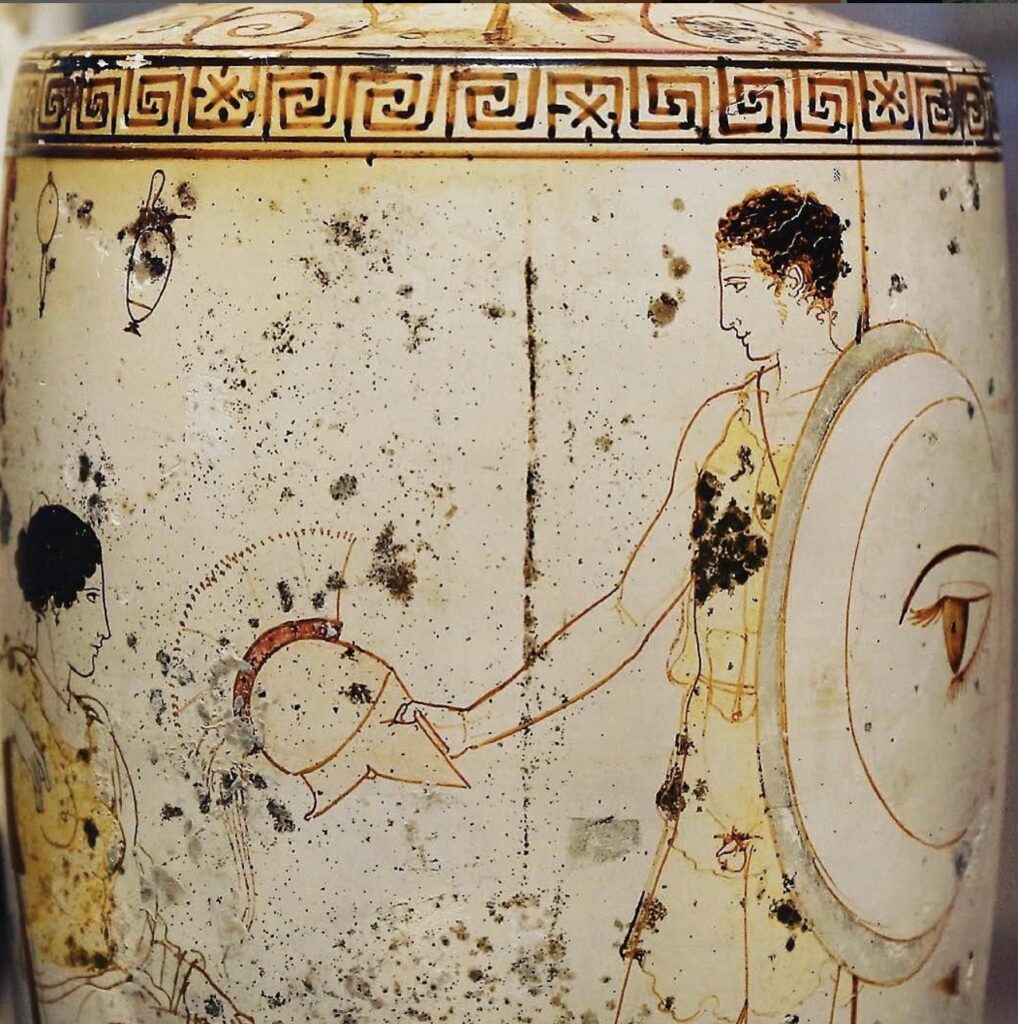
And it was during the terrible decades of the Peloponnesian Wars that lekythoi became even more strongly associated with the funerary sphere, and intimate (and quite moving) scenes of young warriors leaving their families surged in popularity in Athens – as that city saw so many of its young men killed.
This is one of the finest examples, attributed to the Achilles Painter, showing a young warrior (helmet in hand – I love the way he grasps it by the nose-piece…) standing before a woman seated in a domestic interior (perhaps his mother). His impressive physique is clothed, but on display in sheer fabric (made more sheer by faded pigments). His shield is incredible, the device a lone, highly detailed eye.
The vase (like hundreds of others) was most probably used to pour a libation to the deceased and left at his grave – strongly implied that the dearly departed was the one painted.
One wonders what that glorious eye meant? To direct our attention to this poignant leave-taking? Heighten its emotional impact?

